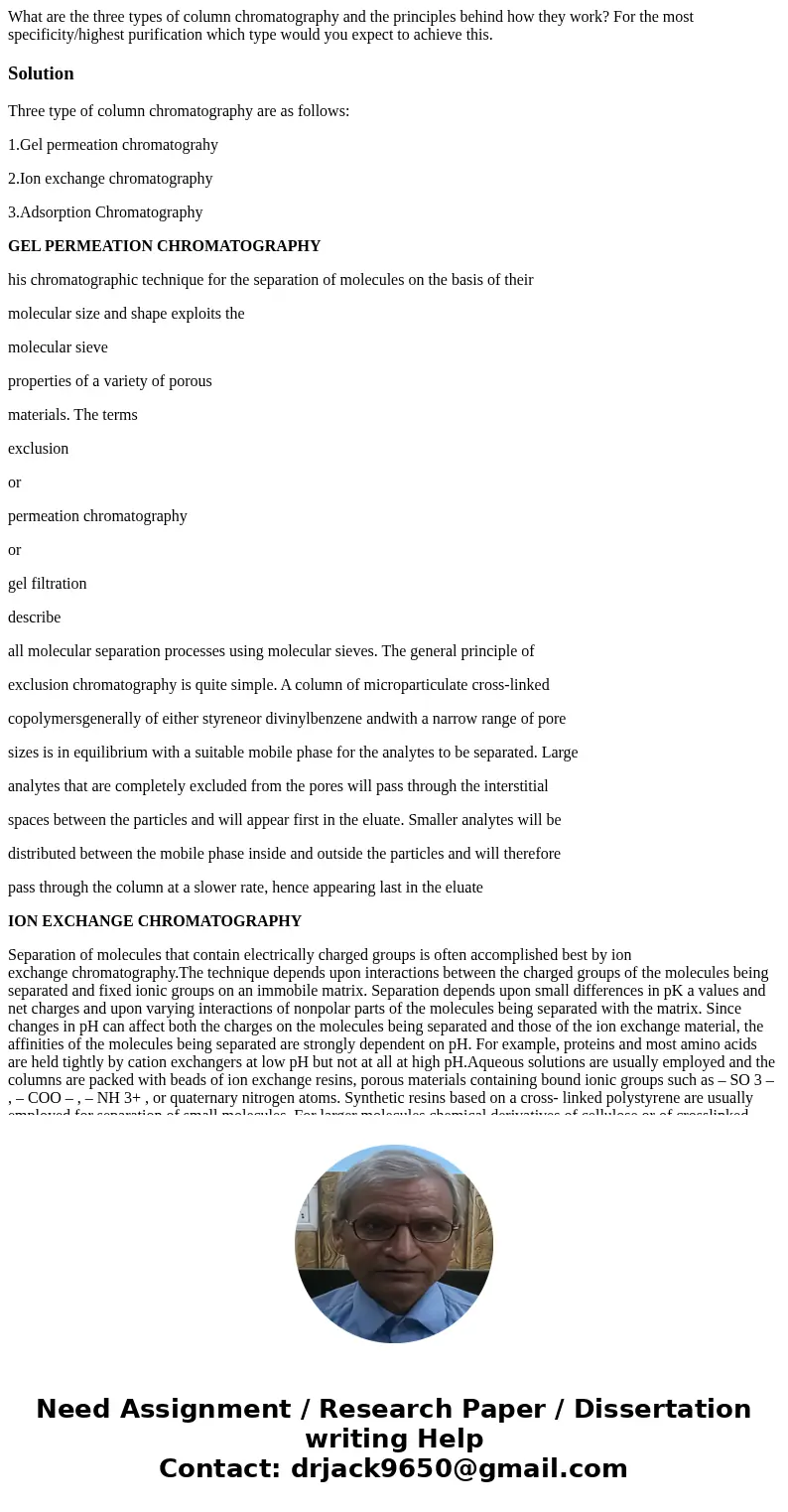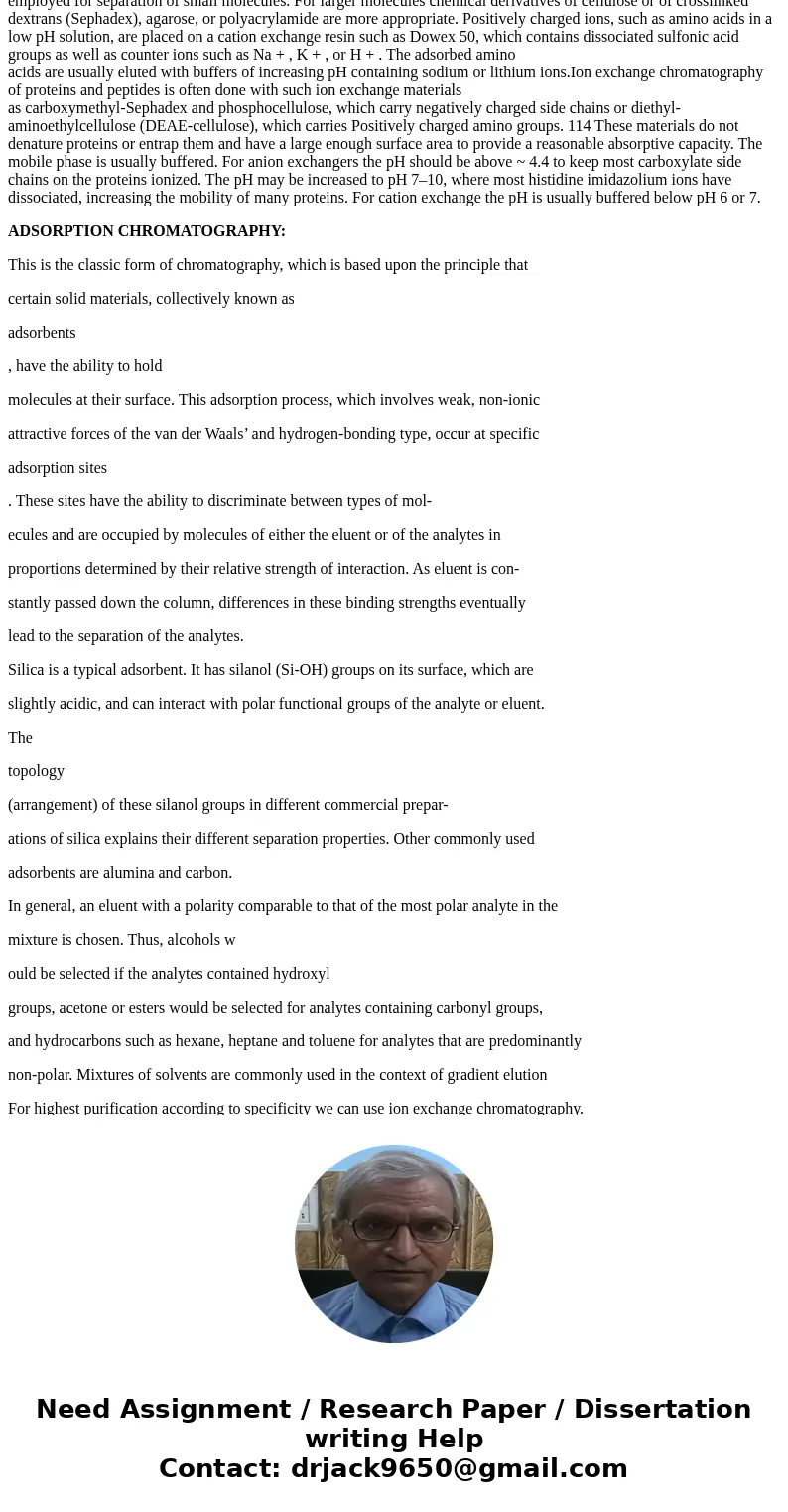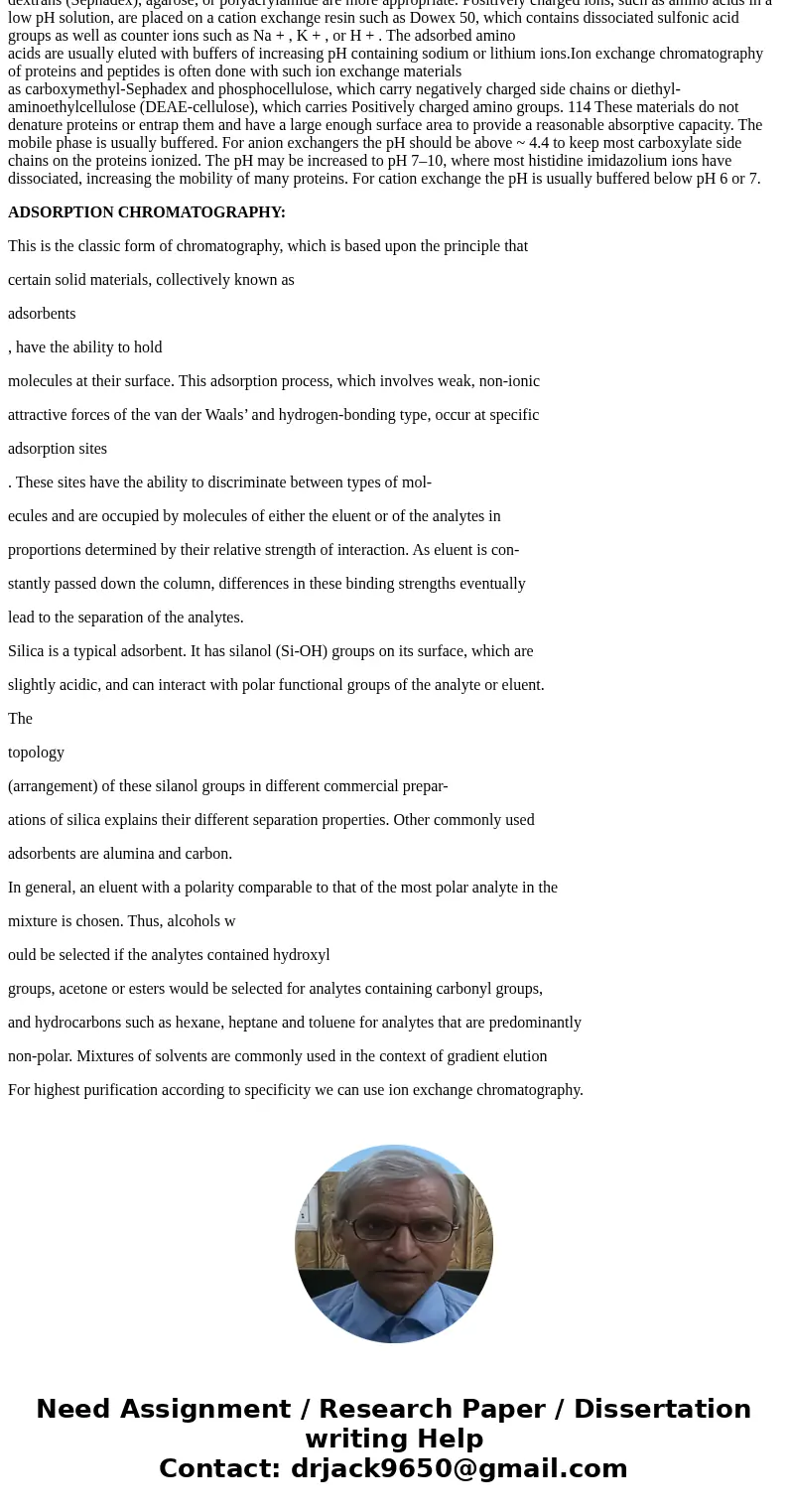What are the three types of column chromatography and the pr
What are the three types of column chromatography and the principles behind how they work? For the most specificity/highest purification which type would you expect to achieve this.
Solution
Three type of column chromatography are as follows:
1.Gel permeation chromatograhy
2.Ion exchange chromatography
3.Adsorption Chromatography
GEL PERMEATION CHROMATOGRAPHY
his chromatographic technique for the separation of molecules on the basis of their
molecular size and shape exploits the
molecular sieve
properties of a variety of porous
materials. The terms
exclusion
or
permeation chromatography
or
gel filtration
describe
all molecular separation processes using molecular sieves. The general principle of
exclusion chromatography is quite simple. A column of microparticulate cross-linked
copolymersgenerally of either styreneor divinylbenzene andwith a narrow range of pore
sizes is in equilibrium with a suitable mobile phase for the analytes to be separated. Large
analytes that are completely excluded from the pores will pass through the interstitial
spaces between the particles and will appear first in the eluate. Smaller analytes will be
distributed between the mobile phase inside and outside the particles and will therefore
pass through the column at a slower rate, hence appearing last in the eluate
ION EXCHANGE CHROMATOGRAPHY
Separation of molecules that contain electrically charged groups is often accomplished best by ion
exchange chromatography.The technique depends upon interactions between the charged groups of the molecules being separated and fixed ionic groups on an immobile matrix. Separation depends upon small differences in pK a values and net charges and upon varying interactions of nonpolar parts of the molecules being separated with the matrix. Since changes in pH can affect both the charges on the molecules being separated and those of the ion exchange material, the affinities of the molecules being separated are strongly dependent on pH. For example, proteins and most amino acids are held tightly by cation exchangers at low pH but not at all at high pH.Aqueous solutions are usually employed and the columns are packed with beads of ion exchange resins, porous materials containing bound ionic groups such as – SO 3 – , – COO – , – NH 3+ , or quaternary nitrogen atoms. Synthetic resins based on a cross- linked polystyrene are usually employed for separation of small molecules. For larger molecules chemical derivatives of cellulose or of crosslinked dextrans (Sephadex), agarose, or polyacrylamide are more appropriate. Positively charged ions, such as amino acids in a low pH solution, are placed on a cation exchange resin such as Dowex 50, which contains dissociated sulfonic acid groups as well as counter ions such as Na + , K + , or H + . The adsorbed amino
acids are usually eluted with buffers of increasing pH containing sodium or lithium ions.Ion exchange chromatography of proteins and peptides is often done with such ion exchange materials
as carboxymethyl-Sephadex and phosphocellulose, which carry negatively charged side chains or diethyl- aminoethylcellulose (DEAE-cellulose), which carries Positively charged amino groups. 114 These materials do not denature proteins or entrap them and have a large enough surface area to provide a reasonable absorptive capacity. The mobile phase is usually buffered. For anion exchangers the pH should be above ~ 4.4 to keep most carboxylate side chains on the proteins ionized. The pH may be increased to pH 7–10, where most histidine imidazolium ions have dissociated, increasing the mobility of many proteins. For cation exchange the pH is usually buffered below pH 6 or 7.
ADSORPTION CHROMATOGRAPHY:
This is the classic form of chromatography, which is based upon the principle that
certain solid materials, collectively known as
adsorbents
, have the ability to hold
molecules at their surface. This adsorption process, which involves weak, non-ionic
attractive forces of the van der Waals’ and hydrogen-bonding type, occur at specific
adsorption sites
. These sites have the ability to discriminate between types of mol-
ecules and are occupied by molecules of either the eluent or of the analytes in
proportions determined by their relative strength of interaction. As eluent is con-
stantly passed down the column, differences in these binding strengths eventually
lead to the separation of the analytes.
Silica is a typical adsorbent. It has silanol (Si-OH) groups on its surface, which are
slightly acidic, and can interact with polar functional groups of the analyte or eluent.
The
topology
(arrangement) of these silanol groups in different commercial prepar-
ations of silica explains their different separation properties. Other commonly used
adsorbents are alumina and carbon.
In general, an eluent with a polarity comparable to that of the most polar analyte in the
mixture is chosen. Thus, alcohols w
ould be selected if the analytes contained hydroxyl
groups, acetone or esters would be selected for analytes containing carbonyl groups,
and hydrocarbons such as hexane, heptane and toluene for analytes that are predominantly
non-polar. Mixtures of solvents are commonly used in the context of gradient elution
For highest purification according to specificity we can use ion exchange chromatography.



 Homework Sourse
Homework Sourse